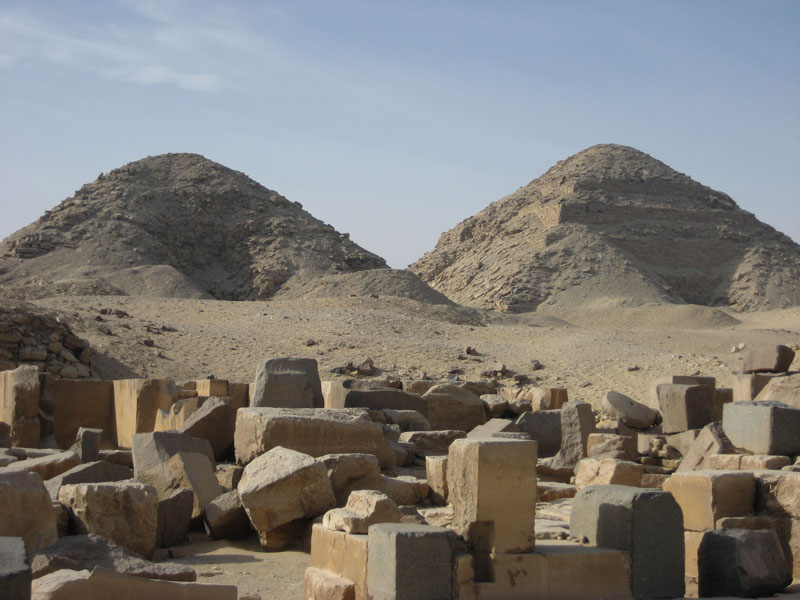
ABUSIR
THE NEFERIKARA & INI PYRAMIDS

The Neferikara Pyramid (right) is the largest pyramid at Abusir, with the Ini Pyramid (left) coming in as a close second.
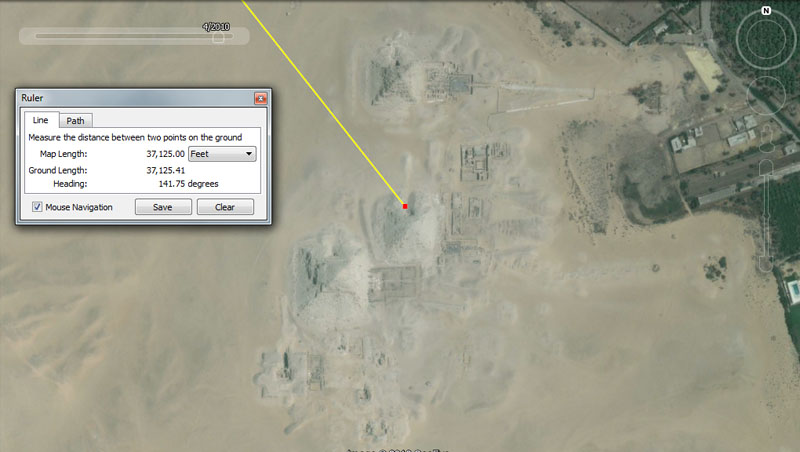
A line runs in from the Khafre Pyramid and resolves upon the Ini Pyramid. To the North of Ini is the Sahure stepped Pyramid and to the SE is the Neferikara Pyramid.
The Ini Pyramid seems to carry the primary fix code for the Abusir group and sits 37125' away from the Khafre Pyramid @ 141.75-degrees.
A distance of 37125', which equates to 2.25 English leagues or 6.5 Scottish miles of 5940' each.
The 141.75-degrees angle value is a very strong lunar code in a mathematical progression and there would be 25 intervals of 14.175-days (340.2-hours) in a lunar year of 354.375-days.
There would be 48 intervals of 141.75-days in the 6804-day lunar nutation cycle (note: 3402 is half of 6804).
There would be 20 increments of 141.75' in the base perimeter of the Khafre Pyramid (708.75' per side or 2835' for a full circuit).
Likewise, there would be 18 intervals of 141. 75 days in the 2551.5-day lunar count (7.2 lunar years) monitored and tracked alongside 7-solar years in the lunisolar Sabbatical Calendar of antiquity.
The Ini Pyramid sits 37500' from the Great Pyramid @ 144.10-degrees.
Under the 24750-mile equatorial circumference ("11" navigational method) the sum of 375-miles would be 1/66th of the equatorial circumference. There would be 14 X 375' in a Greek mile or 44 X 375' in a British league of 16500'.
There are 96 increments of 3.75-degrees in a 360-degree circle.
Whereas an angle of 144-degrees would be highly significant as a factorable value in a numerical progression, 144.10 degrees has no significance, other than teaching initiate surveyor-navigators the amount of degree shift away from the primary fix point when doing triangulation calculations.
The distance from the Menkaure Pyramid onto the Ini Pyramid is 36750' @ 139.6-degrees.
This is precisely 7 Greek miles.
THE NEFERIKARA PYRAMID.
The distance from Khafre Pyramid's summit to Neferikara Pyramid is, again 37125' @ 142.5-degrees, a shift of 1.25-degrees from the angle to Ini Pyramid.
From the Great Pyramid onto Neferikara is 37500' @ 144.8-degrees, a shift of .7 of a degree in comparison to this selfsame distance from the Great Pyramid to Ini Pyramid.
Alternatively, the return angle from the Pyramid of Neferikara's western side could be read as 325-degrees back to the Great Pyramid. A mathematical progression, based upon 325, generates values used in Sabbatical Calendar calculations.
From Menkaure Pyramid to Neferikara Pyramid is, again, 36750' @ 140.25-degrees (a shift of .65 of a degree).
The official base length of the Neferikara Pyramid is 105 metres per side for all 4 sides. This translates quite fluidly to the dynamic code of 345.6', which is one of the most used numbers of antiquity (note: the Sarsen Circle at stonehenge has an outer rim circumference of 345.6' or 11.52' per lintel). Under the 24883.2 Greek mile equatorial assignment, the sum of 345.6-miles would be 1/72nd of the World's circuit.
By the measurements of William Flinder's Petrie, the Menkaure Pyramid of the Giza Plateau was designed to be 345.6' per side.
The official height is given to have been 72 metres. This translates fluidly to 236.25' or exactly half the design height of the Khafre Pyramid. This value is strong lunar coding. The sum of 236.25-days would equate to 8 lunar months of 29.53125-days (29 & 17/32nds).
SAHURE PYRAMID.
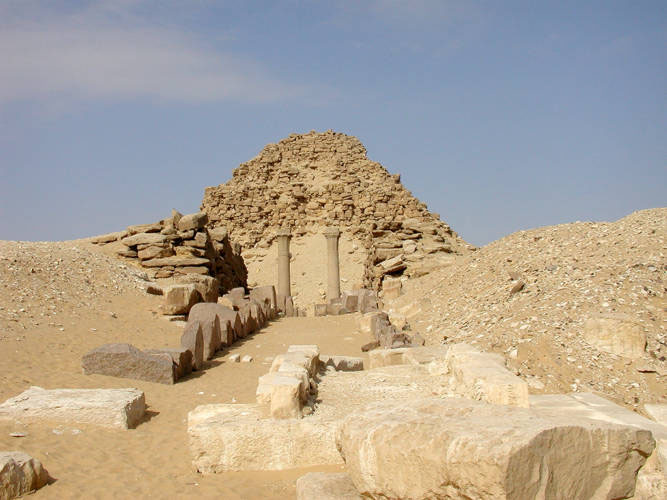
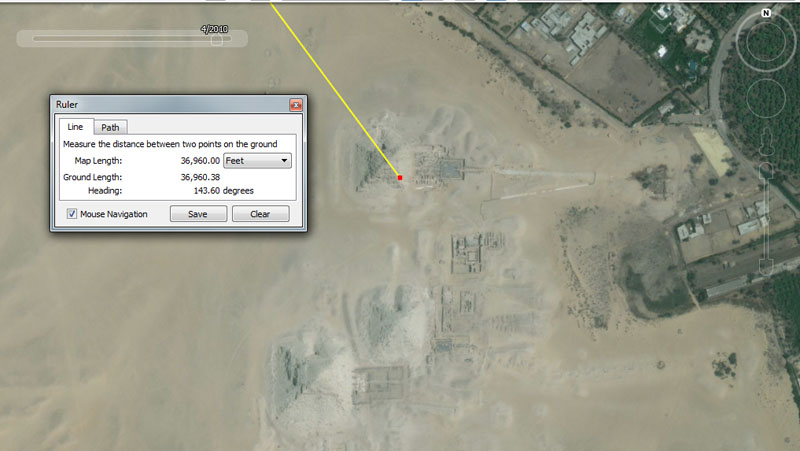
The Sahure Pyramid sits 36960' @ 143.6-degrees from the Great Pyramid's altar.
The sum of 36920' is 7 English miles.
Alternatively, a 144-degree line would brush the sides of both Sahure and Ini pyramids which, when viewed from the Great Pyramid, would jut up like the "V" of a gun sight.
The distance from Khafre Pyramid to Sahure Pyramid is 36666.66666' (1/3rd of 110000') @ 141.2-degrees. This distance is 1/3564th of the 24750 English mile equatorial circumference. The value 3564 arises often in the ancient parcel of navigational numbers.
The degree angle has no significance as a factorable number within the ancient parcel.
From the Menkaure Pyramid, a line 36288' in length would resolve upon the Sahure Pyramid @ 139-degrees. This distance is 6-minutes of equatorial arc under the 24883.2 Greek mile navigational method for determining the size of the Earth.
Again, the degree angle has no significance as a factorable number.
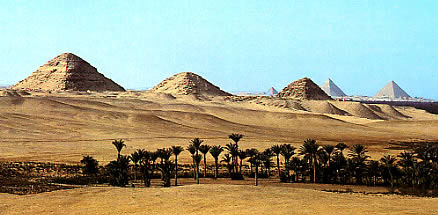
The 3 old kingdom stone pyramids at Abusir, with the 3 pyramids of the Giza Plateau in the background (the Great Pyramid to the far right).
THE PYRAMID OF DJEDEFRE AT ABU RAWASH.
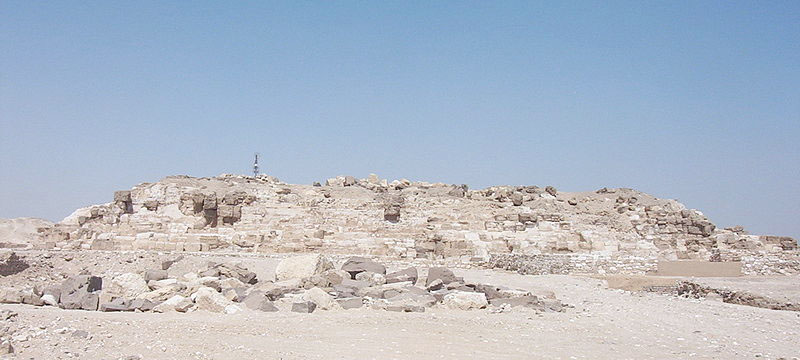
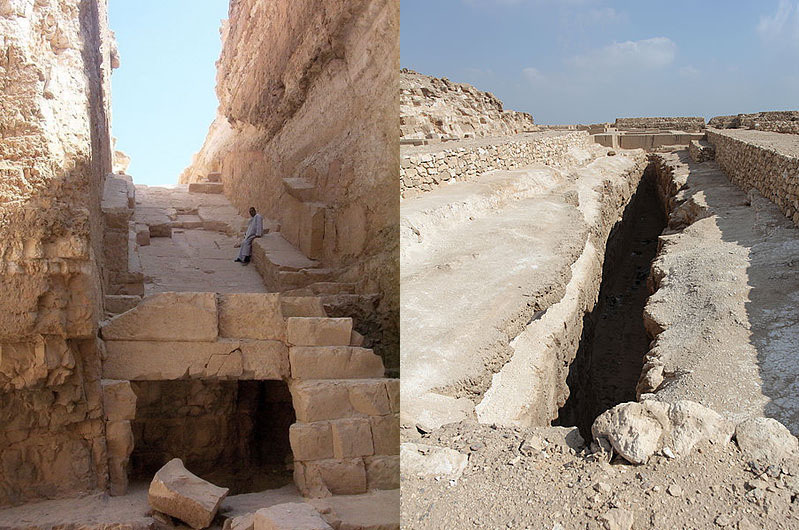
The Pyramid of Djedefre is thought to have once rivaled the Menkaure Pyramid, but was plundered for its stone in Roman times and reduced to its present dilapidated condition. To the left is seen some of its surviving stonework and to the right its boat pit.
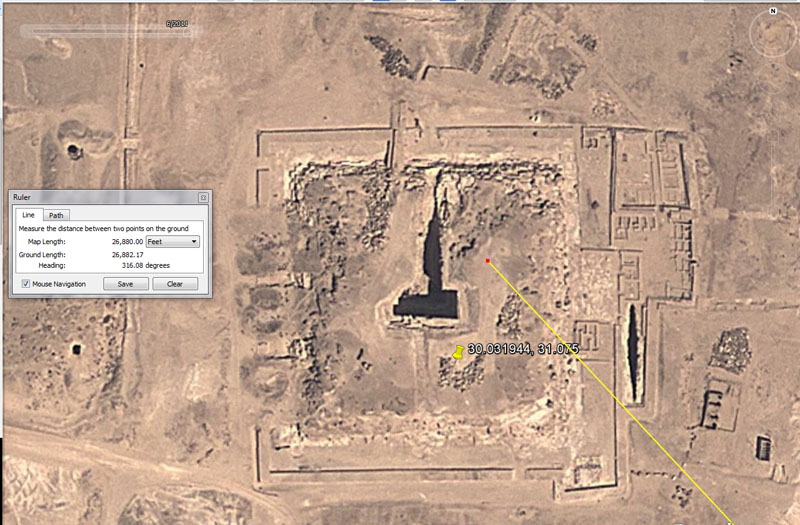
The Pyramid of Djedefre sits an intended (coded) 26880' from the altar floor atop the Great Pyramid @ a return angle of 136.08-degrees.
Both the distance and the angle are very strong navigational codes that relate to the equatorial circumference of the Earth.
In the 24883.2 Greek mile equatorial circumference (130636800') there would be 26880 Roman miles of 4860'.
Under this navigational system, 1-degree of arc on the equatorial circumference was 362880' or 135 X 2688'.
The sum of 26880' is 5.12 Greek miles, which means there are 4860 X 5.12 Greek miles in the Earth's equatorial circumference.
The degree angle is likewise an expression of the equatorial circumference and there would be 9600 X 13608' in that circuit.
The sum of 3-degrees of equatorial arc equates to 80 X 13608' (feet).
The sum 1.5-minutes of equatorial arc equates to 8 X 13608" (inches).
The small satellite pyramid near the Pyramid of Djedefre's southwestern corner also seems to have carried the 26880' distance code, but with a return angle to the Great Pyramid of 135-degrees.
From these coded lengths and angles from the Great Pyramid, out to distant satellite pyramids, it's relatively easy to work out all of the navigational methods that the pyramid builders had devised for circumnavigating the world in their ocean going vessels.
A fleet of river barges, twelve in number, were found buried in the sand at Abydos, Egypt in 1991. They dated to 3000 BC and were up to 72' long. Yet earlier ships, with deep displacement hulls and sleek design are pictured on wall relief's that date to, perhaps, 4500 BC.
The funerary ship taken from a sealed pit beside the Great Pyramid and reassembled shows that the Egyptians were certainly in possession of advanced shipwright skills, sufficient to build either rivercraft or fully fledged ocean going vessels.
VISUAL ACUITY WHEN READING DEGREE ANGLES.
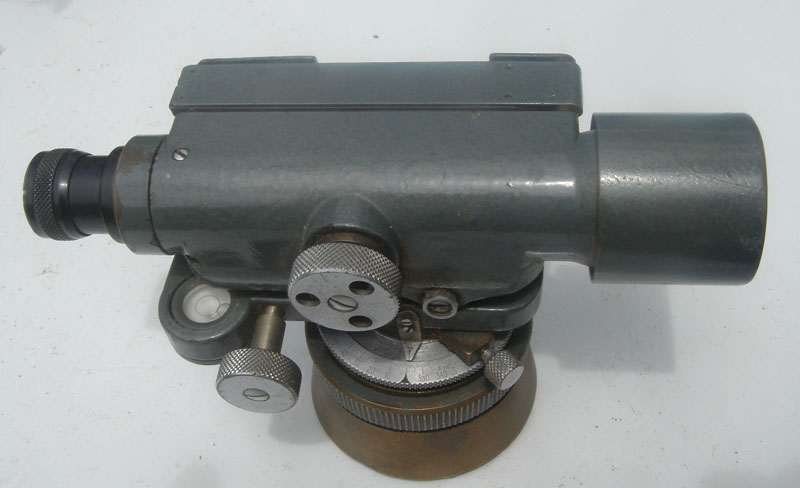
Pictured is the author's old, but very finely built, optical level, which features a calibrated disc set out in 360-degrees that is then sub-divided into 10ths of a degree.
To achieve such refinement when reading angles is visually very difficult. It would be realistic to assume that the ancient surveyors, undertaking these overland sightings with cruder instruments, could only work to degree angle accuracies of, say, 1/4th of a degree, which, even at that, would be an impressive achievement.
As for the special factorable numbers that the ancient scientists used to describe the equatorial size of the Earth and astronomical (mainly lunar) cycles, it must be remembered that they had to devise very fluid, manual systems to facilitate difficult calculations.
In our modern age of electronic calculators and GPS we tend to forget the plight of early scientists, who learned their mathematical systems by rote & repetition and developed amazing skills in storing information for recall from the memory banks as needed. They also had access to abacus devices or other forms of static calculation aids. Their sciences were encoded in numbers ... the numbers of "civilisation".